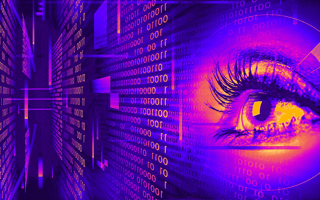Computer vision uses artificial intelligence to train computers to analyze and understand images on an advanced level. That involves everything from video tracking and object recognition to scene reconstruction and navigation mapping.
Lots of industries — real estate, retail and even dentistry — have found innovative ways to incorporate computer vision. We’ve rounded up the computer vision companies worth a closer look.
Top Computer Vision Companies
- Magic Leap
- Veritone
- Matterport
- Iterative Health
- Piaggio Fast Forward
- Radar
- Streem
- Evolv Technology
- Descartes Labs
- Orbital Insight
Computer Vision Companies to Watch
Location: Cambridge, Massachusetts
How it uses computer vision: Iterative Scopes is bringing gastroenterology up to speed with other healthcare disciplines by applying computer vision and AI technology to detect diseases and provide treatments. The company’s computer vision tools analyze images and produce accurate locations of objects. If any further action is needed, AI algorithms can match patients with the ideal clinical trial, reducing the time it takes to get patients personalized care.
Location: Fully Remote
How it uses computer vision: Occipital combines 3D sensors and Apple’s technology to make it easier for people to design interactive models for industries like home improvement and healthcare. The company’s tool Canvas operates on iPhones and iPads and provides detailed scans of spaces for measurements, drawings and other purposes. Meanwhile, Occipital’s Structure Sensor applies scanning technology to patients, so healthcare professionals can deliver more accurate and in-depth diagnoses.
Location: Palo Alto, California
How it uses computer vision: Nauto encourages better driving habits among fleets by tracking on-road behavior with computer vision and AI technology. With a system of AI-based cameras and sensors, Nauto anticipates incoming collisions and provides real-time alerts to drivers. Rather than record all interactions, the company’s computer vision tools only home in on dangerous scenarios to compile relevant data and respect users’ privacy.
Location: New York, New York
How it uses computer vision: OnSiteIQ is reshaping the construction industry into a tech-driven sector with its construction photo documentation platform. After a team walks through a site and compiles visual data, OnSiteIQ’s computer vision technology merges this data with a company’s floor plan. Workers and managers can then view their sites from anywhere and even travel back to previous project phases, making it easier to spot potential issues, track progress and ensure teams stay on schedule.
Location: Portland, Oregon
How it uses computer vision: Streem enables customers to report issues like broken refrigerators or congested heaters with augmented reality technology in app form, connecting technicians with users for remote troubleshooting via video. But unlike standard video chat apps (FaceTime, for instance), Streem incorporates computer vision that can determine brand numbers, model information, part details and other specs directly through the platform.
Location: Fully Remote
How it uses computer vision: Veritone is on a mission to make AI more accessible for organizations, and the company does so through its Veritone aiWARE platform. Possessing computer vision, the platform can analyze satellite images, detect logos, recognize license plates and discern text, among other capabilities. Many of these features also allow clients to create personalized models, so they can adapt Veritone’s technology to fit specific contexts.
Location: Plantation, Florida
How it uses computer vision: Magic Leap develops interactive learning and training solutions with its enterprise augmented reality technology. Tapping into the potential of virtual reality and computer vision, the Magic Leap 1 and Magic Leap 2 headsets immerse users in 3D worlds with advanced sensors and high-quality graphics. Organizations can then run complex simulations to prepare their teams for a variety of situations on the job.
Location: Lousiville, Colorado
How it uses computer vision: AMP specializes in robotics engineering for the recycling industry. The company’s tech solutions work to increase sustainability, decrease waste and improve efficiency at recycling facilities. Its platform leverages AMP Vision, a modular computer vision system that works to understand a facility’s material flow, from the moment materials enter the facility until the end of their processing.
Location: San Francisco, California
How it uses computer vision: Motive builds tech for the safety, efficiency and profitability of its client companies. Its Automated Operations Platform uses AI-powered applications and IoT software to automate the management of over 120,000 businesses in industries like construction, agriculture, passenger transit and delivery. The company’s computer vision uses AI to improve decision-making processes and offer real-time insights.
Location: West Hollywood, California
How it uses computer vision: With its Practice Intelligence platform, Pearl enables dental professionals to deliver more accurate and faster service. The computer vision-powered tool scans and analyzes radiographs to detect bone loss, decay and other issues related to teeth structures. Pearl’s platform then delivers real-time alerts, giving dentists the ability to provide instant insights to patients and plan ahead for the best course of action to take.
Location: La Jolla, California
How it uses computer vision: Propelled by investment from the late serial entrepreneur Larry Bock, whose macular degeneration left him legally blind before the age of 30, Aira pairs visually impaired people with trained agents who act as “seeing eyes” for users. These agents access phone cameras with computer vision to read text, describe nearby objects and help users navigate their environments. Aira’s next frontier? Using AI and computer vision to learn and chart users’ regular routes.
Location: Sunnyvale, California
How it uses computer vision: Anyone who’s ever been in the market for a new place and squinted through galleries of grainy apartment images on Craigslist understands the use value of an outfit like Matterport. The company’s software captures high-quality 3D images and generates virtual tours of interior spaces, giving potential buyers and renters a quick and accurate sense of layout. Besides real estate and architecture, the company continues to push its software into construction, insurance and other industries.
Location: New York, New York
How it uses computer vision: Instead of leaving calls to chance during sports’ biggest moments, Hawk-Eye Innovations captures objects with computer vision-driven replay and tracking technology. The company’s SMART and TRACK systems enable officials to go back and take a closer look at actions from multiple angles. Hawk-Eye Innovations’ INSIGHT feature then collects in-depth data, supporting more detailed analyses and sports commentary.
Location: Waltham, Massachusetts
How it uses computer vision: Co-founded by the engineer who programmed the Roomba autonomous vacuum gadget, Veo Robotics aims to design robots that can seamlessly and safely work alongside humans on factory floors. The company’s Veo FreeMove combines computer vision and 3D depth-sensing technology to ensure safe distances between industrial bots and humans or unknown objects.
Location: Boston, Massachusetts
How it uses computer vision: The venerable auto manufacturers behind mod-preferred two-wheelers like Vespa and Moto Guzzi, Piaggio Fast Forward focuses on forward-looking modes of mobility. The self-described “Do Tank” (as opposed to a mere “think” one) debuted with gita, a robot receptacle that trails its user, can lug loads up to 40 pounds and uses computer vision to navigate its environment.
Location: New York, New York
How it uses computer vision: Microblink strives to eliminate manual data entry on apps and mobile devices with computer vision and machine learning. The company developed solutions that individuals and businesses can enjoy, like Identity Suite, which can verify identities, documents and scan documents, and Commerce Suite, which helps with product recognition, loyalty programs and tracking shopper insights.
Location: Santa Fe, New Mexico
How it uses computer vision: After branching off from Los Alamos National Laboratory, Descartes Labs in 2015 used cloud computing and computer vision to mine satellite images and weather data, then map out an estimate of America’s upcoming corn yield. The model proved even more accurate than the Agriculture Department’s own forecast, moving the market three percent. The company has since built a geoprocessing platform that showcases over 100 geospatial workflows and over 120 datasets primed for analysis.
Location: San Francisco, California
How it uses computer vision: Drones are pretty much de rigueur tools for major insurance companies when it comes to property inspection, because they can safely view and record hard-to-reach areas. Using software that analyzes aerial and satellite footage and instantly detects red flags, Betterview floats the concept a bit higher. By running its database of one million-plus roof images through machine learning analysis, for instance, the platform can reportedly diagnose roof damage, tree overhang, ponding, rust and other issues.
Location: San Mateo, California
How it uses computer vision: To provide all-around protection, Verkada reinforces security systems with a cloud-based platform and computer vision tools. The company equips security teams with the Command platform and environmental sensors, allowing personnel to monitor changes and compile data within a single digital location. AI features can also sift through this data to find events of interest, helping teams work more efficiently.
Location: Natick, Massachusetts
How it uses computer vision: Traditional brick-and-mortar retail usually isn’t the first thing one thinks of when it comes to computer vision. But some retail hardware providers, like Aila Technologies, are combining the in-store experience with the new machine-learning reality. Aila makes customer-facing kiosks (product search, self-checkout and price check) and handheld scanners (inventory management and mobile point-of-sale) that use computer vision to optimize scanning functions.
Location: Waltham, Massachusetts
How it uses computer vision: Anyone who has ever contended with long airport security lines has pined for the kind of computer vision and AI used by Evolv Technology. The company made a portable Evolv Edge system that screens 800-plus people per hour, while letting people continue at their own pace and removing the need to empty pockets. With advanced computer vision, the system can detect a wide range of weapons, including metallic and non-metallic items.
Location: Bellevue, Washington
How it uses computer vision: The Bill Gates-backed startup Lumotive aims to work around the bulky-and-breakable nature of LIDAR by using metamaterials — microscopic structures engineered to feature non-naturally occurring properties, in this case a liquid-crystal metasurface. That surface, in turn, creates a beam-steering chip and computer vision-like radar that forgoes the laser beams of traditional LIDAR, adding another dimension to the realm of autonomous vehicle development.
Location: Austin, Texas
How it uses computer vision: Athena Security has brought computer vision to the security industry to power its temperature and weapons detection products. With advanced scanners, the company is able to determine the temperatures of over 2,000 people per hour, whether they’re masked or unmasked. In more urgent situations, the same system can detect concealed weapons and alert the appropriate personnel of a potential threat.
Location: Santa Monica, California
How it uses computer vision: Metropolis Technologies uses computer vision to provide parking services in major cities. Using the Metropolis platform, drivers can enter and exit parking facilities without making a physical transaction or doing anything on their phone, as Metropolis cameras recognize their vehicles. The company also provides facility management via a network operations center which remotely monitors cameras and gates.
Location: Longmont, Colorado
How it uses computer vision: Scythe Robotics makes robotic electric lawn mowing machines that work autonomously. These robots are used in commercial and fleet groundskeeping operations and boast safety features far more advanced than standard human-operated mowers. The mower, known as the M.52., uses computer vision, 3D mapping, semantic awareness and AI to detect obstacles and perceive details like terrain changes and grass conditions, for both safety and quality control.
Location: Moline, Illinois
How it uses computer vision: American manufacturing company John Deere makes heavy machinery for agriculture, construction and industry, as well as marine engines, hydraulics and other industry-specific machinery. For its agricultural products, which include tractors, excavators, harvesting equipment and skidders, the company is developing applications for computer vision technology, which allows machines like herbicide sprayers and tractors to labor autonomously, powered and guided by machine learning algorithms.
Location: Dublin, California
How it uses computer vision: AEye is making autonomous travel safer with its long-range computer vision and lidar-based features. 4sight technology is able to spot small objects like pedestrians up to 300 meters away while demonstrating increased accuracy to reduce false alarms. The company’s system is also able to determine when a vehicle cuts in front, allowing autopilot features to make adjustments at top speeds for more secure travel.
Location: Palo Alto, California
How it uses computer vision: Leveraging its AI-based geospatial analytics platform, Orbital Insight gives companies the ability to quickly locate and track mobile and immobile objects. AI algorithms and computer vision narrow down each search to categories such as objects, geolocation and land use. Once an organization has locked on to its desired target, Orbital Insight’s GO platform accumulates sensor data and reports back any unusual patterns of activity.
Location: New York, New York
How it uses computer vision: By combining computer vision with radio frequency identification, Radar’s platform allows retailers to track inventory in real time — gathering info about when shelves need restocking, as well as how people are interacting with products — and auto-charge customers for purchases as they leave the store. In addition, the company’s geofencing technology detects curbside arrivals, making for a smoother pickup at the grocery store.
Location: San Francisco, California
How it uses computer vision: Co-founded by a former Intel engineer and Department of Defense consultant, Hover lets renovation-minded homeowners whip up a 3D digital doppelgänger of their home by snapping photos with a smartphone. Users upload images into the app, then advanced CV generates the 3D model, through which homeowners, contractors or (in the case of damage assessment) insurance adjusters can virtually stroll. Partnerships with the likes of Home Depot mean potential buyers can visualize updates like roof and wall finishes with greater clarity.
Location: Austin, Texas
How it uses computer vision: Apptronik builds humanoid robots using computer vision technology to enable them to identify objects, perceive their environment and safely navigate their interactions with humans. In December 2024, the company began a partnership with Google DeepMind with a goal of AI-powered humanoid robot advancement. The company hopes to develop intelligent robots that can operate safely in complex environments alongside humans.


























